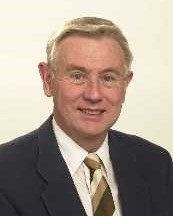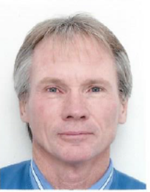What your Company paid for its Human Capital and what it got for its Money
FEATURED PAPER
By E A Bradley, MSME, MBA
and
Prof Harry Wichers, PhD
North West University
Potchefstroom, South Africa
Introduction
Many times, the phrase “our people are our most important asset” is used by company CEO’s. Yet personnel are not included on the balance sheet of any company. There are several reasons for this, including the fact that the personnel are not owned by the company. This paper is informed by a literature survey spanning two hundred years, from the early comments of Joseph Whitworth in the Nineteenth Century till the present and by the writer’s 50 years of experience in industry and academia.
What this paper attempts to do is put people onto the balance sheet, and to do it in two ways: what the company paid for the asset (that is, what the people cost) and secondly what the company got for its money (that is, what is the value of the personnel asset).
The cost of the asset is determined by using Discounted Cash Flow calculations for every current employee, using their current Cost to Company, their years to retirement and the company’s current Cost of Capital. These costs are then aggregated for all personnel to achieve the cost of the asset. Such a calculation fulfils all the necessary accounting conventions.
A conventional balance sheet is in effect a snapshot in time – what the value and structure of a company’s assets were on the date signified on the balance sheet
The fact remains that for our human capital example, the commitment of the company to the individuals involved is the governing factor, and therefore the calculation is the correct assessment of the human capital value when the calculation is made. If there are changes, for example if personnel are to be made redundant, then the commitment ceases and a new DCF calculation is made.
This proposed method of Human Capital evaluation is simple, easy to perform using a company’s standard accounts, and does not, in principle, violate any established accounting conventions. The main objections to the practice centre on the fact that the employees are not owned by the company. Nevertheless, a balance sheet may be developed for management accounting purposes which includes a value for Human Capital. The normal balance sheet, to adhere to legal and shareholder requirements, may still be prepared and used until legal requirements change.
This particular technique for human capital evaluation, has, as far as the writer’s research has been able to show, not been implemented or proposed before.
In a recent field test of the index, taken at a South African water supply company, the value of the Human Resource was calculated at UK£7 million. This compared with the traditional hardware asset base of UK£97 million, leading to a ratio of 7.2%. That is, it requires a human asset of about 7% of the hardware asset to maintain the latter.
The spreadsheet detailing the calculation is given below in Table 1
This ratio can be compared with similar companies both locally and oversees to see how they compare. Do similar companies invest more or less on this particular human asset? Is there an optimum ratio for this type of work in this sort of company? Further research and access to the relevant companies’ files is necessary to answer this question.
What is envisioned is a database linking human capital to various industries. For a steel mill or other heavy engineering effort, the percentage of human capital compared to traditional hardware capital is probably very low. For an information technology firm on the other hand, the human capital percentage would be much higher, perhaps reaching into the 90’s. Nevertheless, there would be a certain range of human capital in each case that would typify the industry involved. If such a data base was developed, it could be used by company management to determine, for example, whether the company was under- or over-invested in human capital.
More…
To read entire article, click here
How to cite this paper: Bradley, E.A.; Wichers, J.H. (2020). Human Capital Evaluation: What your Company paid for its Human Capital and what it got for its Money; PM World Journal, Vol. IX, Issue VI, June. Available online at https://pmworldlibrary.net/wp-content/uploads/2020/05/pmwj94-Jun2020-Bradley-Wichers-human-capital-evaluation.pdf
About the Authors

Edgar Bradley
Johannesburg, South Africa
![]()
Edgar A. Bradley is a Consultant, specializing in Benchmarking, Human Capital Evaluation and RAM work (Reliability, Availability, and Maintainability). His qualifications include a Bachelor’s degree in Mechanical Engineering from the University of the Witwatersrand, Johannesburg, South Africa (1964) and a Master’s degree in Mechanical Engineering from the University of Akron, Ohio, USA (1969) aswell as an MBA from Cranfield University, in the UK (1975). He has the South African Government Certificate of Competency (Factories, Mechanical) and has completed the course in Advanced System Reliability Engineering by JBS Associates, Knoxville, Tennessee, USA. He also has completed the course in Repairable Systems Reliability and Failure Analysis by the Finn Jensen Reliability Consultancy, Denmark.
For the past ten years he has worked as a Mechanical Consulting Engineer, giving consulting and training to the petroleum and other industries in the Middle East and in Southern Africa. He was formerly employed by Eskom, the South African power utility, in the position of Chief Consultant (RAM) in the Generation Group. His 31 years with Eskom included 18 years’ experience as a Reliability and Maintenance specialist as well as, before that, 11 years as a Project Engineer and two as a Boiler Plant Specialist. He has also worked for mechanical contracting firms as a project and design engineer, and has 50 years of industrial experience in Benchmarking, RAM engineering, power plant, pipework engineering, cryogenics and plant maintenance.
In 1999 he received Eskom’s Chairman’s Award for his work in developing the Operators’ Challenge, a simulator-based competition to improve power station operators’ performance and reliability. In 2002 he developed the concept further with the Cyberthon, an international version of the challenge, held between power station operators in South Africa and Russia. For the several years he served on one of Eskom’s tender boards
For over 40 years he has also served as a lecturer in the Faculty of Industrial Engineering at the University of the Witwatersrand, lecturing and developing courses on the MSc programme on inter alia, Reliability Engineering, Maintenance Engineering, Project Management, Industrial Marketing and Systems Engineering. He has also lectured in Reliability Engineering at the University of Pretoria. In 2013 he was appointed as lecturer in Quality at the Namibian University of Science and Technology. He has lectured in Reliability Engineering and Systems Engineering at North West University as well.
He has consulted to many firms in the electronics, defence, petrochemical, electricity, mining, manufacturing and chemical industries. He has also presented many industrial training programmes, both in-house and open to industry. He is a Registered Professional Engineer and a Member of the South African Institute of Industrial Engineers. He was also twice President of the Southern African Maintenance Association (SAMA – now SAAMA). In 1999 he had the major input into the design of the SAMA Audit and Award process, which was successfully applied in 1999 for the first time in South African industry. In 2001 he was accepted as a member of Mensa South Africa and in 2004 as a member of the Society of Maintenance and Reliability Professionals, USA.
He has had papers presented on reliability, maintenance and related subjects at conferences in South Africa, the USA, Australia, China, Hong Kong, Israel, Korea, Zimbabwe, the UK and Egypt. He has published papers in journals in South Africa and the UK. In both 2003 and 2004 he was invited to speak on the Eminent Speaker Tour of various chapters of the Maintenance Engineering Society of Australia. He is a regular trainer on various courses in various countries in the Middle East. He was a conscripted member of the South African Defence Force for ten years, retiring with the rank of Major from the Technical Services Corps. In 2016 he authored the book Reliability Engineering – A Life Cycle Approach, published by CRC/Taylor and Francis in the USA.
Edgar has been married to Peggy since 1968. They have four children: Guy, Vanessa, Susan and Samantha, and five grandchildren, Josh, Zara, Cassy, James and Jensen. Edgar’s non-work-related interests include church work, classic motorcycle restoration, birding, conservation and travel, especially by 4×4. He can be contacted at edgar.bradley@telkomsa.net

Prof J H (Harry) Wichers
South Africa
![]()
Prof. Harry Wichers has been a part-time lecturer at the North West University (NWU), former Potchefstroom University for CHE, on pre- and postgraduate levels in Systems Engineering and Reliability Engineering from 1986 – 2000. He continued to lecture on pre and postgraduate level at the same university in various Engineering Management subjects from 2003 to 2010. These subjects included Creative Entrepreneurship, Maintenance Management and Entrepreneurial Career Skills. He has also lectured at the Vaal University of Technology (VUT), Vanderbijlpark, in the subjects Maintenance Engineering. He was instrumental in 2004 in the establishment of the Centre for Research and Continued Engineering Development in the Vaal Triangle, (CRCED Vaal), focusing on delivering Master and Doctoral degrees in Engineering Management to Industry. Prof. Wichers is a registered Professional Engineer with ECSA, member of the Institutes of Business Management and Mechanical Engineers (SAIME) and founder member and ex-president of the Southern African Maintenance Association (SAMA).









